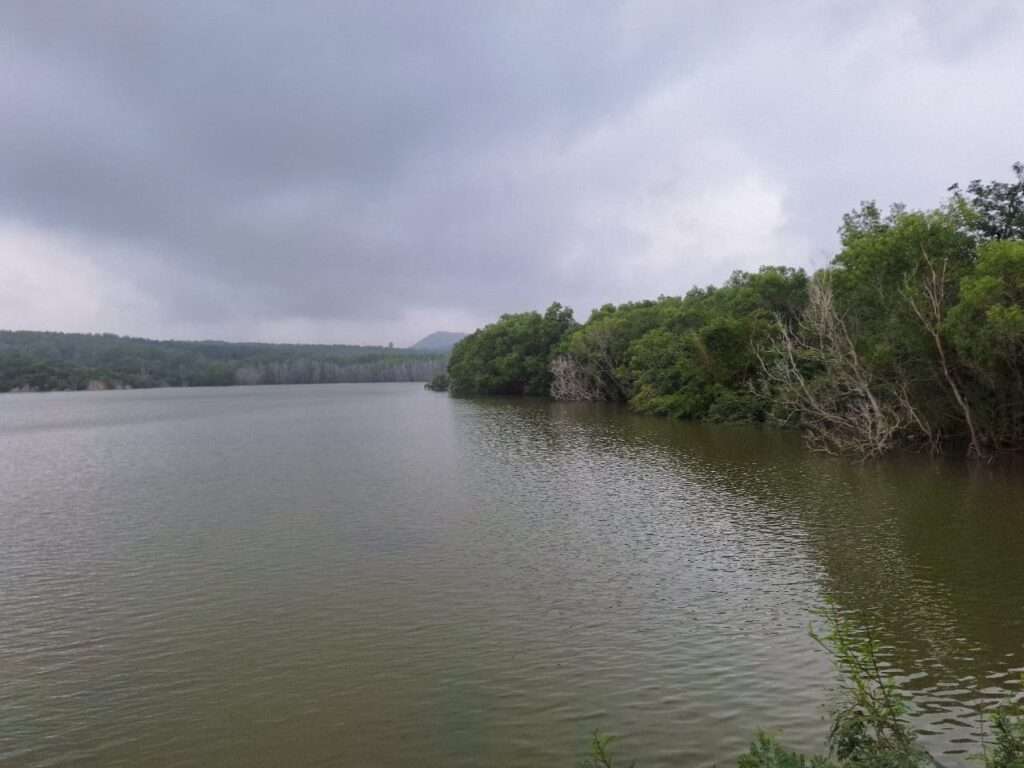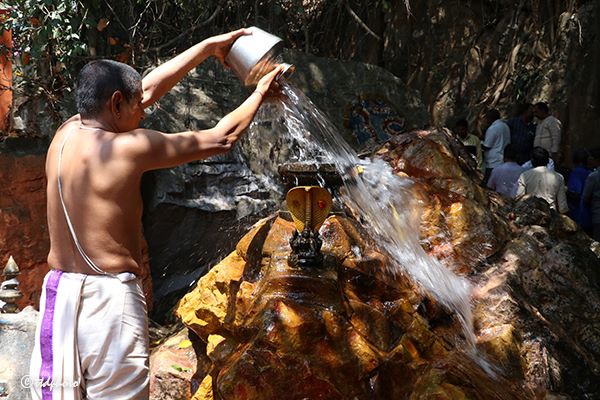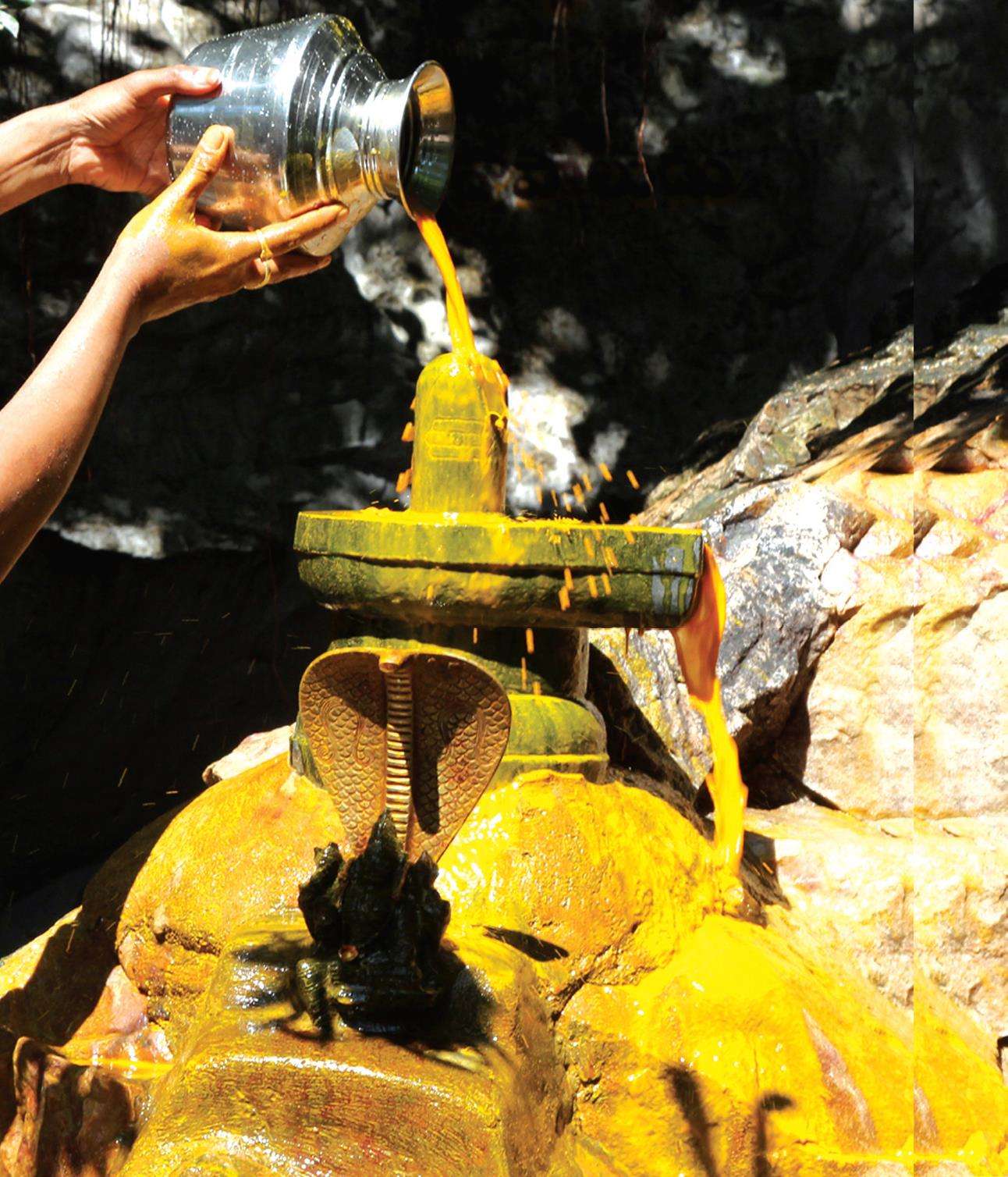Kshethrapalaka Sila
(A stone of Kshethrapalaka i.e., an inferior manifestation of Shiva)
In the premises of Dhwajasthambha Mandapam towards the northeast direction, you can find an elevated stone platform whose height is 18 inches. This platform which is similar in shape to the Balipeetham is known as Kshethrapalaka Sila (Kshethrapalaka Stone).
click here to read about “Kshethrapalaka of Tirumala”
Rudra Sila
Rudra (a synonym of Shiva) is the ruler of this holy pilgrim center. It is said that this symbolic representation of Rudra is there, but no one knows for how long. It is said that the manifested form of this Rudra Sila, with its glowing form, is used to protect and guard the temple by going around it.
The temple priests after closing the main door of the temple used to place the temple keys on this stone after bowing to it. The next day morning after saluting the stone, priests used to collect or pick up the keys to open the temple door.
Shifting Stone from Temple to Gogarbha Theertham
On one particular night when the stone was circumambulating the temple, a boy was crushed to death when he came under it. The priests never wanted this incident to be repeated. As a precaution, it is believed that the main stone was shifted to Gogarbha Theertham (a holy place known as the cow’s womb) which is a little bit away from Tirumala temple. The present stone, people say is a replica of it.

Now the Kshethra Palaka sila in its complete form can be found near Gogarbha Theertham and in its partial form in the temple near Dhwajasthambham.
On every Shiva Ratri day (Feb – March) the temple priests as well as the other administrative officers, tourists go to Pandava Theertham with temple archestra and perform Abhishekam (Give holy bath) while chanting Rudram and Chamakam. After Abhishekam they anoint the stone with Vaishnavite religious markings.
They even fix silver eyes on the stone. After offering strict religious prayers ‘Harati’ (showing the lighted lamp) and food to that sila, Prasadam is then distributed.

After the distribution of prasadam to the devotees’ priests, officials devotees reach back the temple with temple archestra. Even to this day early in the morning the priests who come to perform pooja, first see the bunch of keys and the Crooked pole which is used as an opener of the gate (KUNCHAKOLA) touch the Kshethrapalaka stone and then they salute the stone.
After this, they circumambulate the Dhwajasthambham before entering the temple. This process is repeated by the priests when they close the doors of the temple. This unbroken tradition is in vogue even to this day.
Vishnu’s Abode is protected and Gaurded by Shiva
Tirumala is considered to be the Vaikuntam (Heaven) of this ‘Kali’ Age. Lord Venkateswara Who is known as Srinivasa, is an incarnation of Lord Vishnu. This Vishnu’s abode is protected and guarded by Lord Shiva. Lord Vishnu and Lord Shiva through this Are giving a perfect message to the world. They are loudly proclaiming to the world that there is no difference between Hari and Hara. This is to bring harmony between the followers of Vishnu and Shiva.
Panchakshari Mantra
Let us chant the Panchakshari Mantra “Om Namah Shivaya! Om Namah Shivaya!! Om Namah Shivaya!!!”

